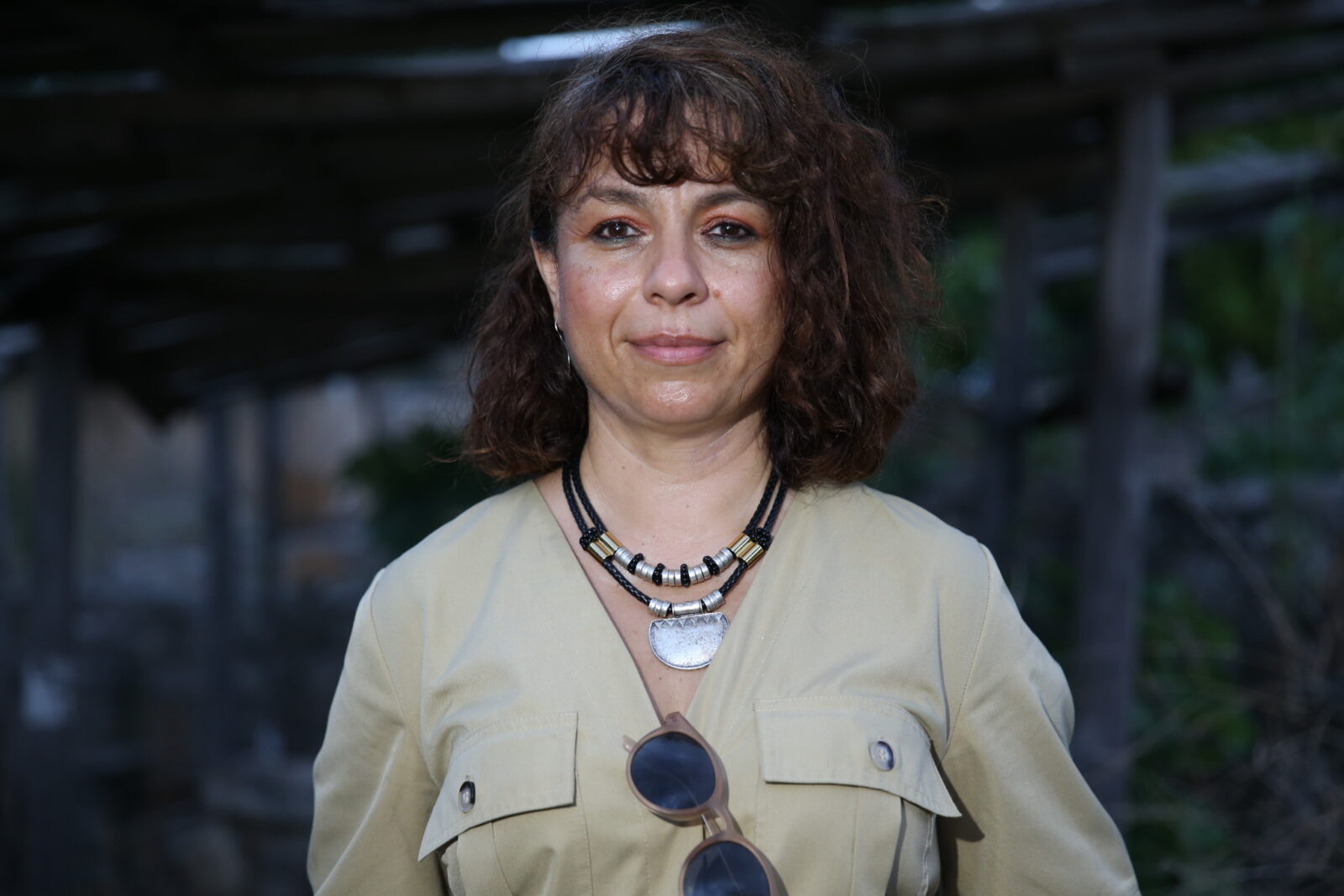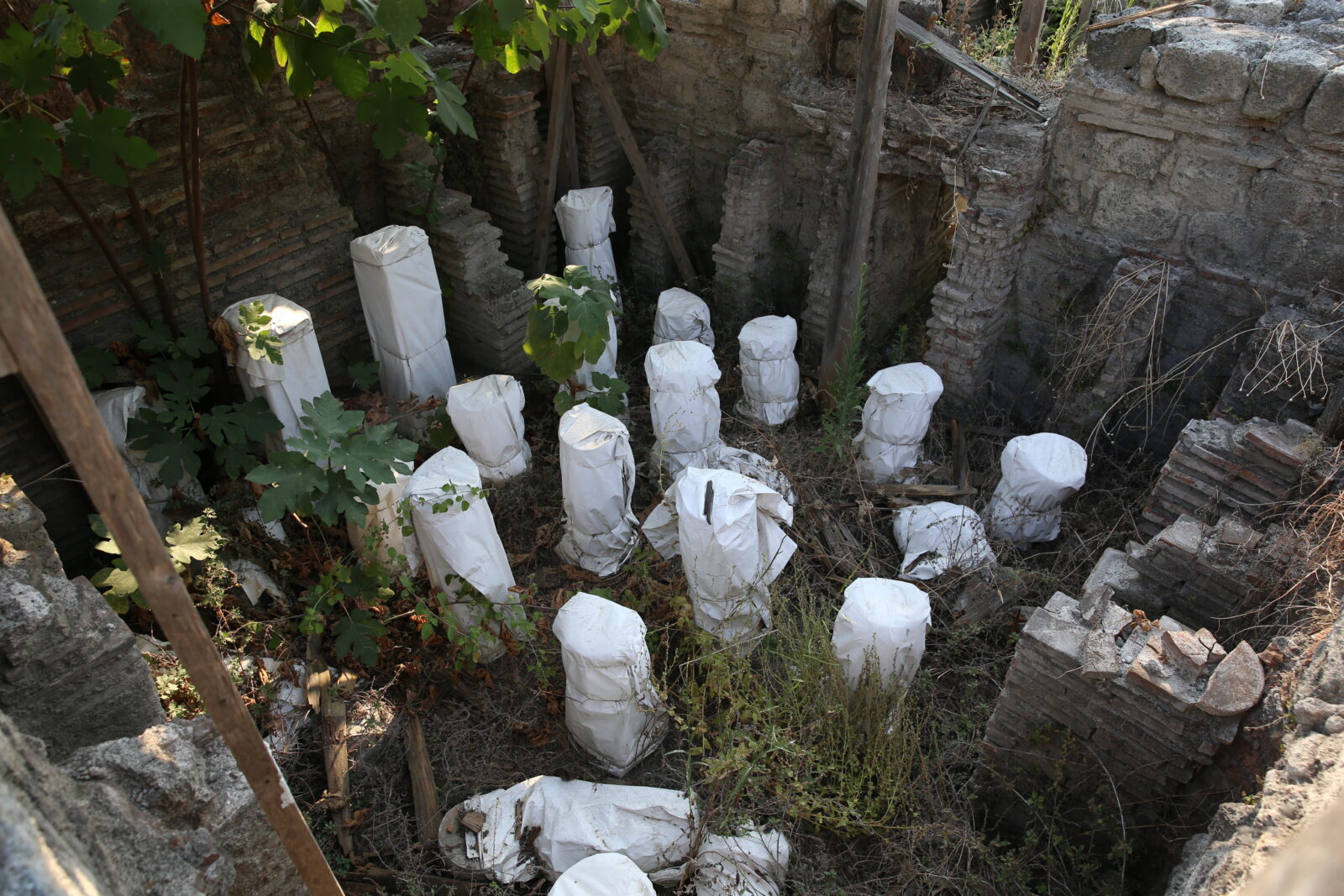Tourist route to be established for famous mosaic-laden Artemis Bath in Hatay
 Work continues to bring Artemis Bath located in ancient city of Epiphaneia in Erzin district of Hatay to tourism, Türkiye, September 12, 2024 (AA Photo)
Work continues to bring Artemis Bath located in ancient city of Epiphaneia in Erzin district of Hatay to tourism, Türkiye, September 12, 2024 (AA Photo)
Efforts continue to restore the Artemis Bath, located in the ancient city of Epiphaneia in Hatay’s Erzin district, to boost tourism.
Archaeological work at the site, also known as the Issos Ruins, is being conducted under the direction of the Hatay Archaeology Museum and with scientific guidance from Hatay Mustafa Kemal University‘s Archaeology Department lecturer associate professor Banu Ozaydin.
As part of these efforts, the Artemis Bath, which dates back to the Roman era and was supplied by the city’s ancient aqueducts, is set to be opened to visitors.
The project, approved by the Ministry of Culture and Tourism’s General Directorate of Cultural Heritage and Museums, will include the construction of a protective roof over the bath and a tourist route for easier exploration.
Three mosaic panels, which were discovered at different times and later transferred to the Hatay Archaeology Museum, will have replicas made by local women from Erzin. These will be displayed at the original site.

‘We will provide mosaic reproduction training for women’
Ozaydin emphasized that the Artemis Bath in this ancient city, which was first settled 6,000 years ago, stands out for its mosaics.
She noted that work has begun on the tourist route and protective roof project, with the aim of completing the work within a year.
“The replicas of the mosaics will be made by women and presented to visitors,” said Ozaydin, adding, “We will train local women in mosaic reproduction. This initiative will not only preserve an ancient tradition but also contribute to the economic development of the district. We are in talks to implement this project soon.”

Ozaydin stressed the importance of opening the bath to the public: “This project will be a significant development for the tourism sector in Hatay and Erzin. Our team at the Epiphaneia Ancient City will begin work with the bathhouse. This will become a focal point, an attraction for the region. Our goal is to once again showcase the unique and well-preserved mosaics to the public.”
Ozaydin highlighted the importance of opening the bath to visitors, stating that the project will significantly boost tourism in Hatay and Erzin. The team at Epiphaneia Ancient City plans to start their efforts with the bathhouse, transforming it into a major attraction for the region with its unique and well-preserved mosaics on display for all to see.

Exploring Artemis Bath and Mosaics of Epiphaneia
The ancient city of Epiphaneia, located in the Gozeneler region of Erzin district, Hatay, offers a fascinating glimpse into the past with its remarkable Roman bath and mosaics. Founded between the Mediterranean and the Taurus Mountains, Epiphaneia’s historical significance is underscored by its well-preserved artifacts, including an impressive mosaic floor discovered in 2006.
The mosaic rescue excavation, initially aimed at preserving these ancient artworks, evolved into a comprehensive archaeological project uncovering the Roman bath. Spanning multiple excavation seasons from 2006 to 2011, these efforts revealed intricate mosaics that have become key to understanding the region’s historical and cultural landscape.
Epiphaneia’s mosaics, dating from the second century B.C. to the sixth century A.D., showcase a chronological sequence of artistic styles. The Artemis mosaic, in particular, stands out for its depiction of the goddess Artemis amid a rich tapestry of wildlife and geometric patterns. This mosaic, along with others from the site, aligns with regional artistic traditions seen in similar works from Antakya to North Africa.
The Roman bath complex, featuring a range of flooring types including opus sectile and mosaic tiles, is a testament to the advanced craftsmanship of the era. The bath’s layout, consisting of 18 rooms, includes the frigidarium adorned with mosaic flooring. Notably, the Epiphaneia mosaic panel remains the only known mosaic from this site, making it a unique and invaluable artifact.
Comparative studies of these mosaics with others from regions such as Syria and North Africa reveal both similarities and regional differences in artistic techniques and iconography. Despite variations, the thematic consistency, particularly in the portrayal of Artemis, highlights the interconnectedness of ancient Mediterranean cultures.
As Epiphaneia’s Roman bath and mosaics continue to attract scholarly and public interest, they provide crucial insights into the interactions and cultural exchanges that shaped the ancient world. The site’s rich history and preserved mosaics are poised to enhance Hatay’s cultural heritage and tourism appeal, offering visitors a rare opportunity to explore a pivotal piece of history.



